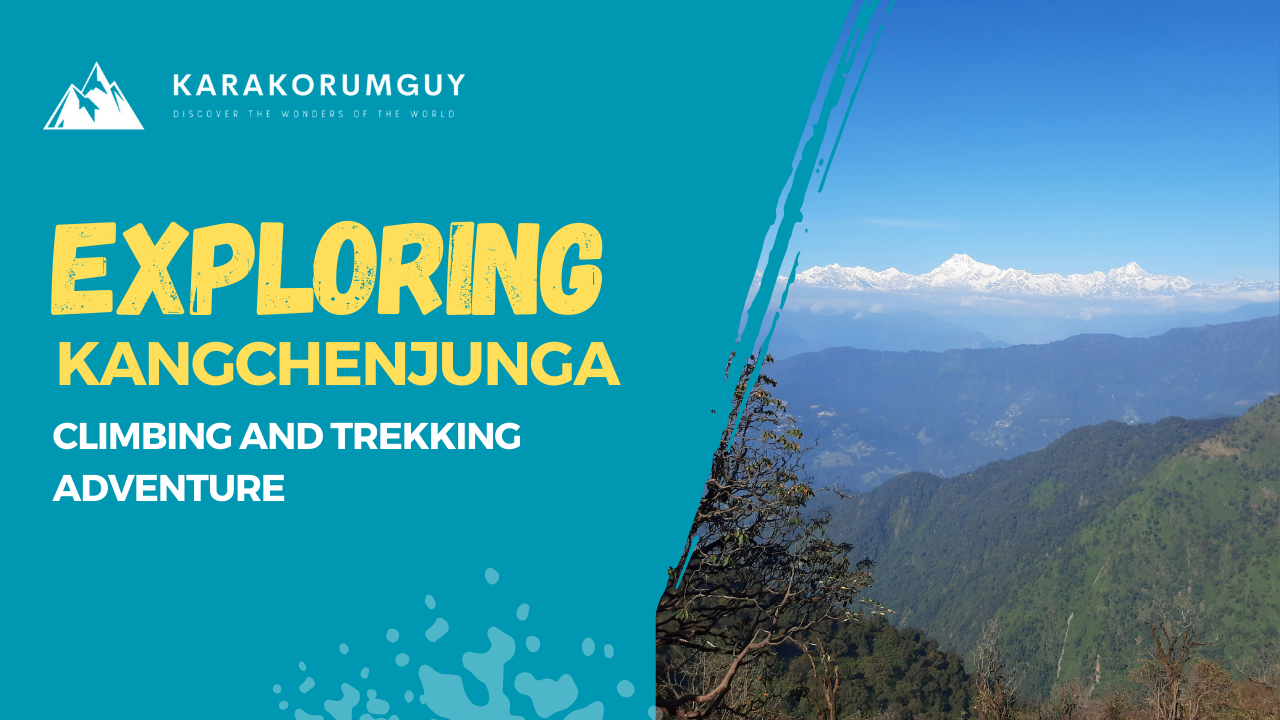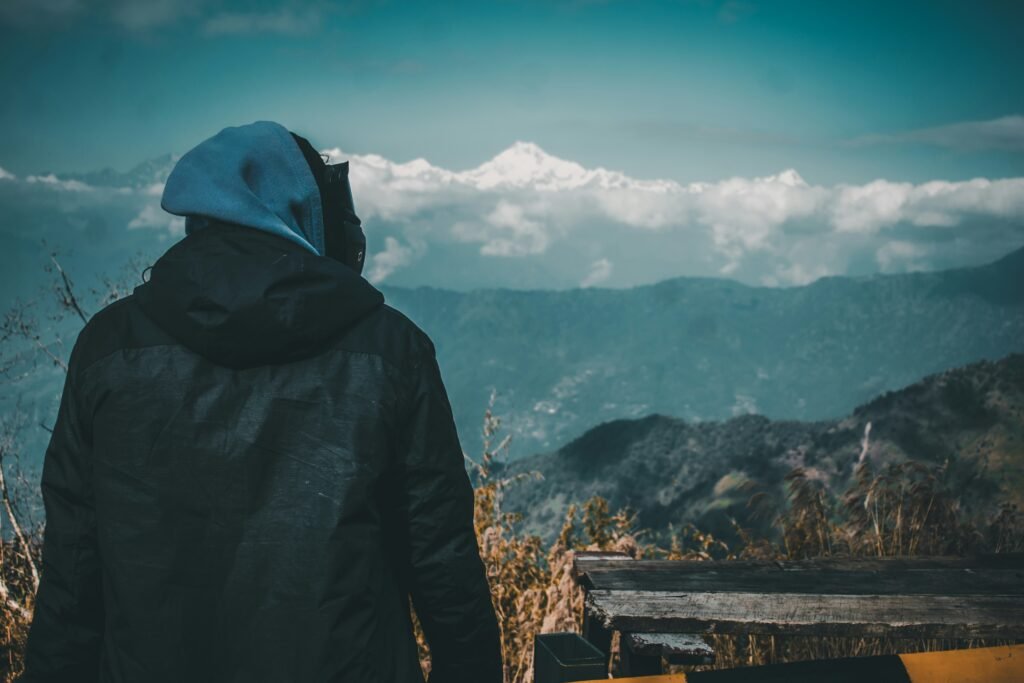
Kangchenjunga is the third highest mountain in the world, located on the border between Nepal and the Indian state of Sikkim. It’s a massive peak, part of the Himalayas, and its name means “The Five Treasures of Snow” in the Tibetan language. Kangchenjunga is known for its challenging climbing routes and its stunning beauty, attracting mountaineers and adventurers from around the globe.
In this article, we’re going to take a close look at Kangchenjunga, the third highest mountain in the world. Let’s dive deep into all the fascinating details about this incredible peak.
Kangchenjunga Massif Overview and Its Five Highest Peaks
The Kangchenjunga massif, situated on the border between Nepal and the Indian state of Sikkim, is renowned for its majestic beauty and formidable climbing challenges. This mountain range is home to five towering peaks, each standing over 7,500 meters above sea level. Here’s an overview of the massif’s highest peaks:
1. Kangchenjunga Main:
Kangchenjunga Main, also known as Kangchenjunga I, is the highest peak in the massif and the third highest mountain in the world, standing at 8,586 meters (28,169 feet).
2. Kangchenjunga West:
Kangchenjunga West, often referred to as Kangchenjunga II, is the western peak of the massif, reaching a height of 8,505 meters (27,903 feet).
3. Kangchenjunga Central:
Furthermore, Kangchenjunga Central, also known as Kangchenjunga III, stands as the central peak in the massif, towering at 8,482 meters (27,828 feet).
4. Kangchenjunga South:
Kangchenjunga South, often called Kangchenjunga IV, is the southern peak of the massif, with an elevation of 8,494 meters (27,867 feet).
5. Kangchenjunga Kang:
It is also referred to as Kangchenjunga V, stands as the eastern peak of the massif. It reaches a towering height of 8,473 meters (27,799 feet).

These peaks collectively form the awe-inspiring Kangchenjunga massif, attracting mountaineers and adventurers from around the world to test their skills and courage against its formidable slopes.
Kangchenjunga: Fatality Rate
The overall fatality rate for climbers attempting to summit Mount Kanchenjunga is approximately 22%. This figure can vary from year to year and depends on several factors including weather conditions, climbing experience of the climbers, and the route chosen. However, historically, it has been lower compared to other major peaks like Mount Everest. Despite this, climbing any high-altitude mountain comes with inherent risks, and climbers should always be well-prepared and informed before attempting such expeditions.
Climbing History and Milestones
Kangchenjunga’s climbing history is rich with milestones and achievements, showcasing the determination and skill of mountaineers:
- First Ascent: The first successful ascent of Kangchenjunga was made on May 25, 1955, by a British expedition led by Charles Evans. Joe Brown and George Band were the first to reach the summit, climbing via the southwest face.
- Route Variations: Over the years, climbers have explored various routes to conquer Kangchenjunga, including the southwest face, northeast spur, and north ridge. Each route presents its own set of challenges, from technical terrain to harsh weather conditions.
- Solo Ascents: Several climbers have achieved solo ascents of Kangchenjunga, showcasing remarkable courage and skill. Among them, Polish climber Jerzy Kukuczka made a solo ascent via the south face in 1983, setting a notable milestone in mountaineering history.
- Winter Ascents: Despite the extreme cold and harsh conditions, a few daring climbers have attempted winter ascents of Kangchenjunga. In 1986, a Polish expedition led by Andrzej Zawada successfully reached the summit in winter, marking a significant achievement in high-altitude mountaineering.
- Speed Records: In recent years, speed climbers have set impressive records on Kangchenjunga. Spanish climber Kilian Jornet completed a rapid ascent and descent of the mountain in just 17 hours and 45 minutes in 2019, showcasing remarkable athleticism and endurance.
- Environmental Conservation: Alongside climbing achievements, efforts have been made to preserve the natural environment around Kangchenjunga. Conservation initiatives aim to protect the delicate ecosystem and ensure sustainable tourism practices in the region.
These milestones in Kangchenjunga’s climbing history reflect the spirit of exploration, adventure, and respect for the mountain’s awe-inspiring beauty and challenges.
Exploring Kanchenjunga: A Tourist’s Paradise
Kanchenjunga offers an unparalleled destination for tourists seeking adventure, exploration, and cultural immersion. With its majestic peaks, pristine landscapes, and rich biodiversity, Kanchenjunga presents a myriad of opportunities for unforgettable experiences. Whether you’re trekking to the base camp, discovering hidden monasteries, or encountering rare wildlife in the conservation area, Kanchenjunga has something to offer every traveler. As one explores its rugged terrain and delves into its rich culture, they discover that Kanchenjunga is not just a destination—it’s a paradise waiting to be explored.
Natural Beauty of Kanchenjunga
Kanchenjunga captivates with its breathtaking natural beauty, enchanting all who behold its majestic presence. Here are some aspects of its stunning allure:
- Snow-Capped Peaks: Towering snow-capped peaks adorn the Kanchenjunga massif, piercing the sky with their icy summits. The sight of these pristine, glistening peaks evokes a sense of awe and wonder.
- Glaciers and Icefalls: Glaciers and icefalls cascade down the slopes of Kanchenjunga, carving intricate patterns into the landscape. These icy formations add a sense of grandeur and dynamism to the mountain’s rugged terrain.
- Alpine Meadows: Nestled amidst the towering peaks are lush alpine meadows, painted with a kaleidoscope of vibrant colors. These verdant meadows provide a stark contrast to the snow-covered peaks, creating a scene of serene beauty.
- Biodiversity: The Kanchenjunga region is teeming with diverse flora and fauna, thriving in its pristine environment. Rhododendron forests, alpine flowers, and rare orchids dot the landscape, while elusive wildlife such as the snow leopard, red panda, and Himalayan black bear roam its rugged terrain.
- Glacial Lakes: Glacial lakes shimmer like jewels amidst the rocky landscape, reflecting the azure sky and surrounding peaks. These tranquil lakes, formed by the melting ice, add to the mountain’s ethereal beauty.
- Spectacular Sunrises: Kanchenjunga offers spectacular sunrise views, painting the sky with hues of pink, orange, and gold. As the first light of dawn illuminates the snow-capped peaks, it creates a magical spectacle that leaves onlookers spellbound.
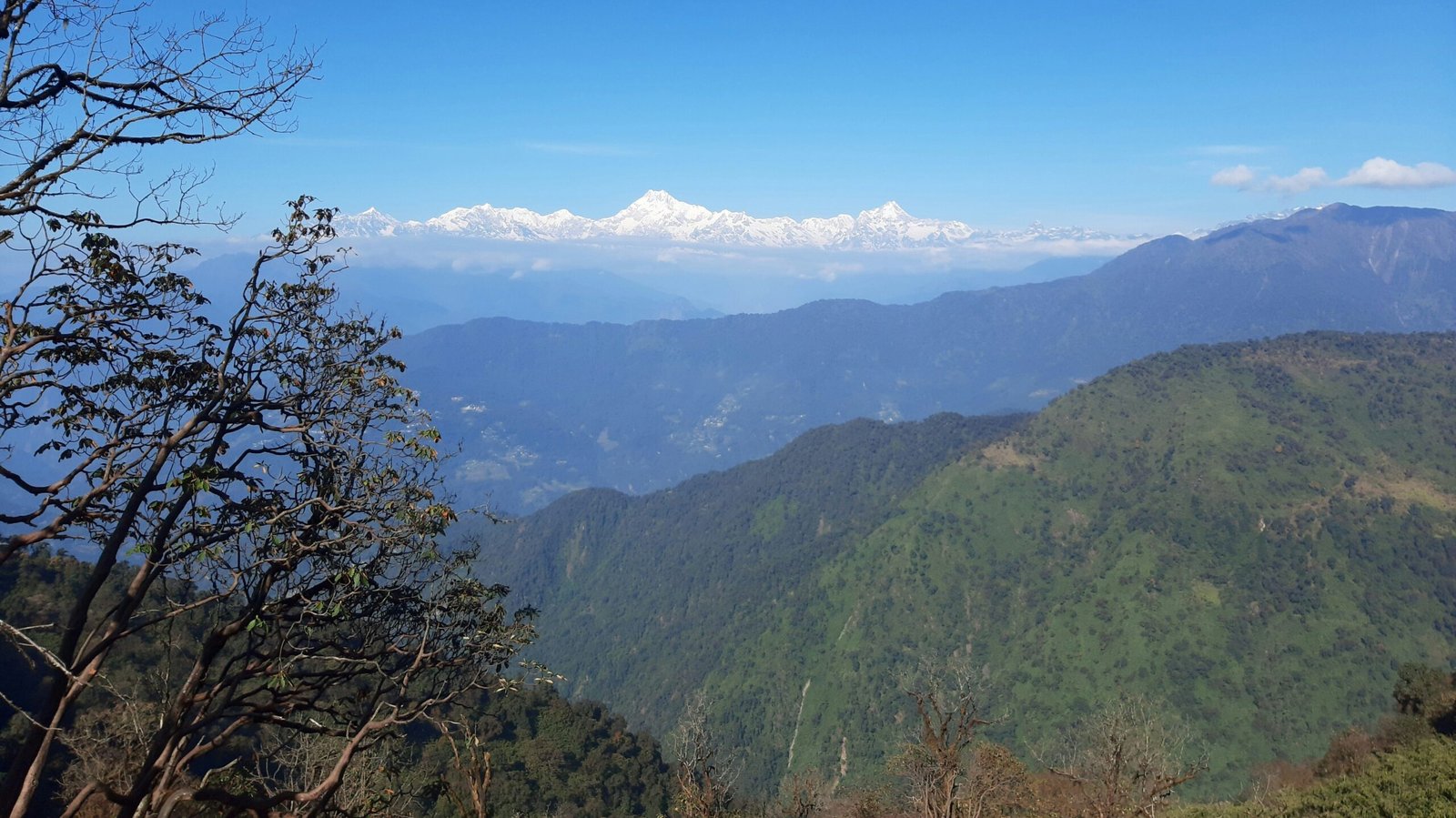
Cultural Significance of Kanchenjunga
In every season and from every angle, Kanchenjunga exudes an unparalleled natural beauty that stirs the soul and inspires a deep reverence for the wonders of the natural world.
Kanchenjunga holds profound cultural significance for the indigenous peoples of the region, deeply ingrained in their myths, legends, and religious beliefs. Here are some aspects of its cultural importance:
- Sacred Mountain: Kanchenjunga is revered as a sacred mountain by the indigenous communities, including the Nepali and Sikkimese people. It is often regarded as the abode of protective deities and spirits, symbolizing strength, purity, and divine power.
- Religious Pilgrimages: The surrounding regions of Kanchenjunga are dotted with monasteries, shrines, and holy sites frequented by pilgrims seeking blessings and spiritual solace. These religious pilgrimages often involve circumambulating the mountain, performing rituals, and offering prayers for prosperity and well-being.
- Mythological Tales: Various myths and legends are woven around Kanchenjunga, passed down through generations. These tales often depict the mountain as the realm of gods and goddesses, intertwined with stories of creation, heroism, and cosmic battles.
- Cultural Festivals: Festivals and ceremonies celebrating Kanchenjunga are integral to the cultural fabric of the region. Events such as the Kanchenjunga Conservation Area Festival in Nepal and Pang Lhabsol in Sikkim pay homage to the mountain through traditional dances, music, and rituals, fostering a sense of community and heritage preservation.
- Environmental Stewardship: The cultural reverence for Kanchenjunga extends to environmental stewardship, as local communities strive to protect the mountain’s pristine ecosystem and biodiversity. Conservation efforts are often intertwined with cultural practices, emphasizing the sacred duty to safeguard the natural world.
Overall, Kanchenjunga’s cultural significance transcends its physical presence, embodying a spiritual connection between humanity and the natural world, fostering harmony, reverence, and cultural identity among the people who call its majestic slopes home.
Must-Do Activities in Kanchenjunga
- Trekking to Kanchenjunga Base Camp: Embark on a trek to the Kanchenjunga Base Camp, where you’ll be rewarded with awe-inspiring views of the world’s third highest mountain. The trek offers a chance to immerse yourself in the pristine Himalayan landscape, surrounded by majestic peaks, glaciers, and alpine meadows.
- Climbing Kanchenjunga: For experienced climbers, ascending Kanchenjunga presents the ultimate challenge and adventure. Conquer the formidable slopes and technical terrain of this iconic mountain, testing your skills and endurance amidst the breathtaking scenery of the Himalayas.
Planning to Climb Mount Kangchenjunga?
Climbing mount Kanchenjunga presents an unparalleled challenge for mountaineers. Situated on the border of Nepal and the Indian state of Sikkim, this towering peak offers breathtaking vistas but demands exceptional skill, preparation, and endurance from those who dare to ascend its icy slopes. Before embarking on such an expedition, climbers must understand the requirements and risks involved in tackling this formidable summit.
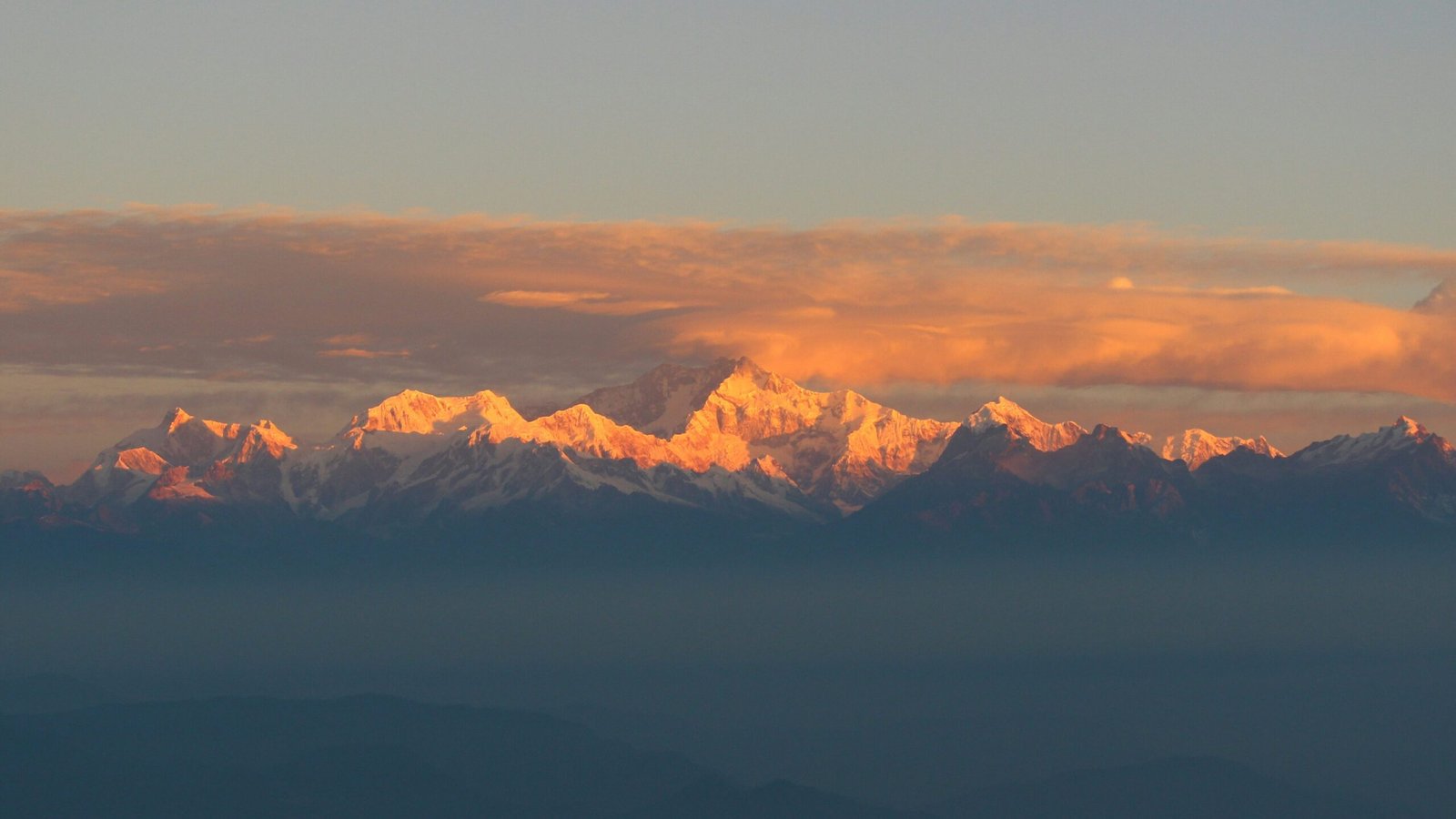
Requirements for Climbing
- Physical Fitness: Climbers must possess exceptional physical fitness to endure the rigorous demands of high-altitude climbing. Endurance, strength, and cardiovascular fitness are essential to cope with the thin air and extreme weather conditions.
- Technical Skills: Proficiency in mountaineering techniques such as ice climbing, glacier travel, and fixed-line ascents is crucial for navigating Kanchenjunga’s challenging terrain. Climbers must be adept at using crampons, ice axes, and other specialized equipment.
- Acclimatization: Proper acclimatization is essential to prevent altitude sickness and ensure a safe ascent. Climbers typically undertake a gradual ascent, allowing their bodies to adjust to the decreasing oxygen levels at higher altitudes.
- Teamwork: Climbing Kanchenjunga requires effective teamwork and communication among team members. Each member must trust and support one another to navigate hazards and overcome obstacles safely.
- Logistics: Detailed logistical planning is necessary to coordinate transportation, accommodations, food supplies, and equipment procurement. Experienced guides and support staff can facilitate a smoother expedition experience.
- Permits and Regulations: Climbers must obtain necessary permits from the respective authorities in Nepal or Sikkim, adhering to local regulations and environmental guidelines to ensure responsible climbing practices.
Risks Involved:
- Altitude Sickness: The high altitude poses a significant risk of altitude sickness, which can range from mild symptoms like headaches and nausea to more severe conditions such as high-altitude pulmonary edema (HAPE) and cerebral edema (HACE).
- Extreme Weather: Kanchenjunga is notorious for its unpredictable and harsh weather conditions, including blizzards, high winds, and sub-zero temperatures. Sudden weather changes can pose serious challenges to climbers.
- Avalanches and Icefalls: The mountain’s steep slopes are prone to avalanches and icefalls, especially during periods of melting snow and ice. Climbers must be vigilant and avoid hazardous areas to minimize the risk of being caught in an avalanche or icefall.
- Technical Challenges: Negotiating steep ice walls, crevasses, and rockfalls requires advanced technical skills and careful route planning. One wrong step can have dire consequences in such unforgiving terrain.
- Exhaustion and Fatigue: Long hours of climbing at high altitude can lead to physical and mental exhaustion, impairing judgment and coordination. Proper rest and pacing are essential to mitigate the risk of accidents and injuries.
- Rescue Challenges: In the event of an emergency, conducting a rescue operation at high altitude poses significant logistical and medical challenges. Limited access to medical facilities and adverse weather conditions can hinder rescue efforts.
Despite the formidable challenges and risks associated with climbing Kanchenjunga, the allure of conquering one of the world’s highest peaks continues to attract adventurous souls seeking the ultimate mountaineering challenge. However, climbers must approach the expedition with careful preparation, respect for the mountain’s power, and a commitment to safety above all else.
Kangchenjunga: Popular Climbing Routes
Kangchenjunga, the third highest mountain in the world, offers several popular climbing routes that challenge even the most experienced mountaineers. Here are some of the notable routes:
1. Southwest Face Route:
- Overview: The Southwest Face Route is one of the most iconic and challenging routes up Kangchenjunga. It involves ascending the steep and technical face of the mountain, requiring advanced climbing skills and high-altitude experience.
- Highlight: The highlight of this route is the breathtaking views of the surrounding Himalayan peaks and the sense of accomplishment upon reaching the summit.
- Difficulty Level: Extremely difficult. Technical climbing skills, including ice and rock climbing, are essential. The route also presents significant objective hazards, such as avalanches and crevasses.
- Duration: Typically takes around 6-8 weeks to complete, including acclimatization and climbing phases.
2. North Face Route:
- Overview: The North Face Route offers a less technical but equally challenging ascent of Kangchenjunga from the north side. It involves navigating through glaciers, snowfields, and seracs, with some sections of steep climbing.
- Highlight: The highlight of this route is the pristine beauty of the northern face of Kangchenjunga and the solitude of less-traveled terrain.
- Difficulty Level: Very difficult. Climbers need solid mountaineering skills, including glacier travel and ice climbing, as well as the ability to handle high-altitude conditions.
- Duration: Typically takes around 6-7 weeks, including acclimatization and climbing phases.
3. Northeast Ridge Route:
- Overview: The Northeast Ridge Route follows the ridge line leading to Kangchenjunga’s summit from the northeast side. It offers a mix of technical climbing and high-altitude trekking through challenging terrain.
- Highlight: The highlight of this route is the dramatic exposure along the ridge line and the stunning views of the surrounding Himalayan peaks.
- Difficulty Level: Challenging. Climbers need strong technical skills for mixed climbing, including rock, ice, and snow, as well as the ability to handle exposure at high altitude.
- Duration: Typically takes around 6-7 weeks, including acclimatization and climbing phases.
4. South Col Route:
- Overview: The South Col Route is a less technical but physically demanding route that ascends Kangchenjunga from the south side. It involves climbing steep snow slopes, traversing crevasses, and negotiating icefalls.
- Highlight: The highlight of this route is the opportunity to experience the diverse terrain of Kangchenjunga, from lush forests to icy glaciers, and to summit via a challenging yet achievable route.
- Difficulty Level: Moderately difficult. Climbers need solid mountaineering skills, including glacier travel and snow climbing, as well as the ability to endure long days at high altitude.
- Duration: Typically takes around 6 weeks, including acclimatization and climbing phases.
Each of these routes presents its own set of challenges and rewards, attracting climbers from around the world seeking to conquer the majestic Kangchenjunga.
Trekking in Kanchenjunga
Trekking in Kanchenjunga is an amazing adventure in the eastern Himalayas of Nepal. You’ll walk through beautiful forests, small villages, and see stunning views of big mountains, including Kanchenjunga, the third highest mountain in the world. You’ll also meet different plants and animals and learn about the local culture. It’s a challenging but unforgettable journey for people who love nature and adventure.
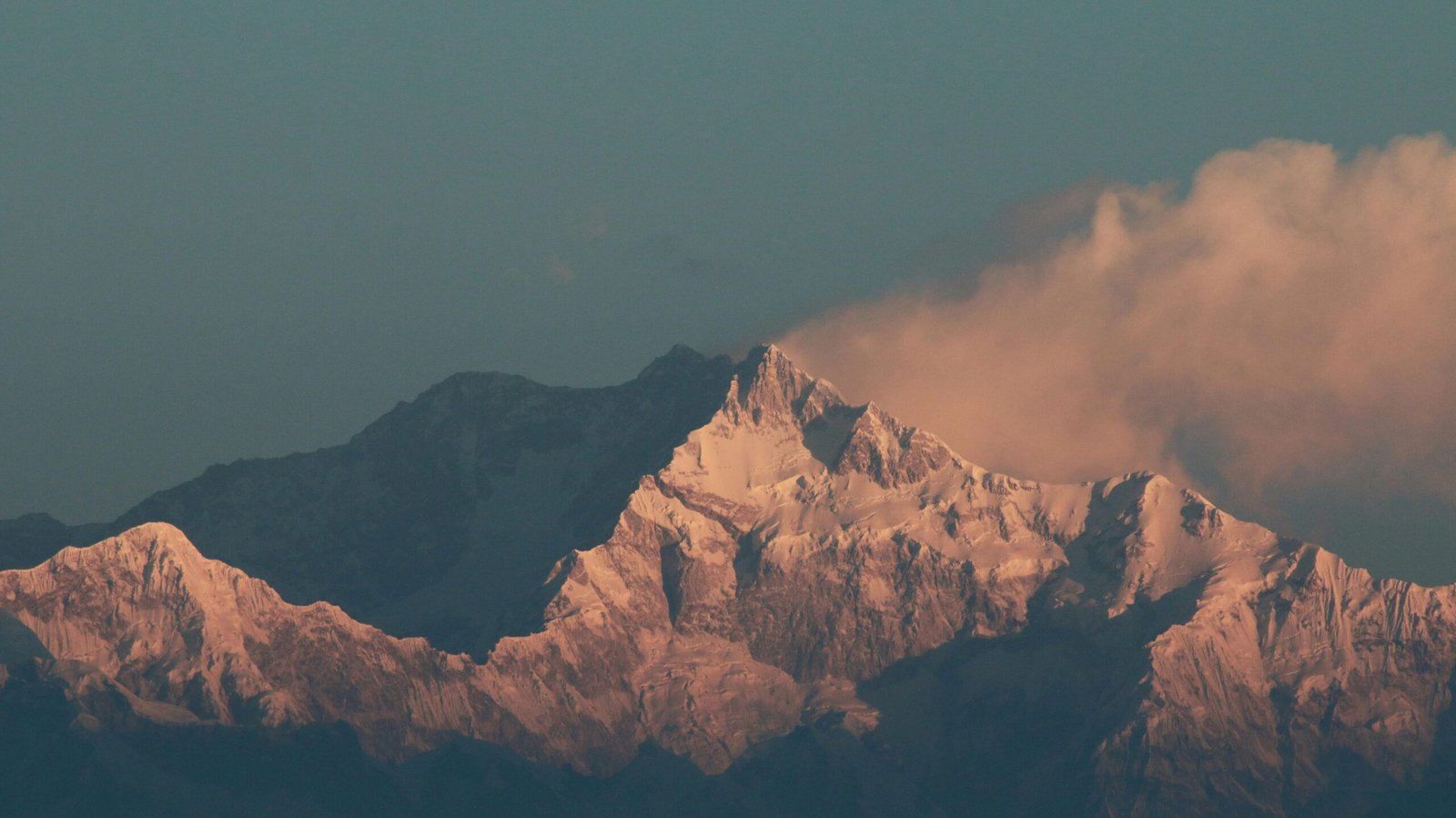
Popular Trekking Routes
Kanchenjunga offers several trekking routes, each with its own unique charm, challenges, and breathtaking views. Here’s an overview of some popular routes, along with their heights and difficulty levels:
1. Kanchenjunga Base Camp Trek:
- Overview: This classic trek takes you to the base camp of Kanchenjunga, the third highest peak in the world.
- Highlights: Spectacular views of Kanchenjunga and its surrounding peaks, diverse landscapes including lush forests, alpine meadows, and glaciers, encounters with local Sherpa and Rai communities.
- Difficulty Level: Moderate to challenging, with high altitude passes and long trekking days.
- Duration: Approximately 15-20 days to complete the trek.
2. North Base Camp Trek:
- Overview: This trekking route leads to the northern base camp of Kanchenjunga, offering stunning mountain views.
- Highlights: Close-up views of Kanchenjunga and its neighboring peaks, pristine alpine scenery, encounters with Tibetan Buddhist culture.
- Difficulty Level: Moderate to challenging, with rugged terrain and high altitude passes.
- Duration: Around 18-22 days to complete the trek.
3. South Base Camp Trek:
- Overview: This trek explores the southern base camp of Kanchenjunga, providing an alternative perspective of the mountain.
- Highlights: Remote and less-visited trails, picturesque villages inhabited by indigenous communities like the Limbu and Rai, serene landscapes of forests and valleys.
- Difficulty Level: Moderate, with some steep ascents and descents.
- Duration: Typically takes 20-25 days to complete the trek.
4. Kanchenjunga Circuit Trek:
- Overview: The circuit trek circumnavigates the entire Kanchenjunga massif, offering a comprehensive journey through the region.
- Highlights: Varied landscapes including glaciers, high mountain passes, and lush valleys, cultural immersion with diverse ethnic groups, panoramic views of Kanchenjunga from different angles.
- Difficulty Level: Challenging, with high altitude and demanding terrain.
- Duration: Approximately 20-30 days to complete the entire circuit.
4. Tamur Valley Trek:
- Overview: This off-the-beaten-path trek follows the scenic Tamur River valley, providing a tranquil and less-visited route in the Kanchenjunga region.
- Highlights: Remote villages and terraced fields, rich biodiversity of flora and fauna, opportunities for birdwatching and wildlife spotting.
- Difficulty Level: Moderate, with gradual ascents and descents along the river valley.
- Duration: Usually takes 12-15 days to complete the trek.
5. Kanchenjunga Goechala Trek:
- Overview: Although part of the route lies in the neighboring state of Sikkim, this trek offers stunning views of Kanchenjunga along with the iconic Goechala Pass.
- It provides a less-crowded alternative to the traditional Kanchenjunga Base Camp trek.
- Trekkers can experience the unique culture and hospitality of both Nepalese and Sikkimese communities.
- Difficulty level: Moderate to challenging, with steep ascents and descents.
- Duration: Approximately 12-14 days
These trekking routes offer unique experiences and challenges, allowing trekkers to immerse themselves in the natural beauty and cultural richness of the Kanchenjunga region.
Safety Tips for Climbing and Trekking Mount Kangchenjunga
Climbing and trekking Mount Kangchenjunga is an exhilarating adventure, but it comes with its own set of challenges and risks. Here are some safety tips to help ensure a successful and safe journey:
- Acclimatize properly to avoid altitude sickness.
- Always carry sufficient food, water, and emergency supplies.
- Dress in layers to adapt to changing weather conditions.
- Use proper climbing equipment and ensure it’s in good condition.
- Follow established trails to minimize environmental impact.
- Inform someone about your itinerary and expected return time.
- Familiarize yourself with emergency procedures and evacuation routes. Carry a means of communication, such as a satellite phone or emergency beacon, in case of emergencies.
- Be aware of potential avalanche areas and crevasses.
- Respect local customs and traditions.
- Stay hydrated and well-rested during the trek.
- Be prepared for extreme weather conditions, including strong winds and cold temperatures.
- Hire an experienced guide if you’re not familiar with the terrain.
- Carry a first aid kit and know how to administer basic medical care.
- Leave no trace: pack out all trash and waste.
- Be honest about your fitness level and experience. Don’t push yourself beyond your capabilities, and be willing to adjust your plans if necessary for safety reasons.
Permits Required for Trekking and Climbing
Trekking and climbing Mount Kangchenjunga, require several permits due to its location in the Himalayas and its significance in both Nepal and India. Here are the permits you typically need:
- Trekking Permit: For trekking in the Kangchenjunga region, you need a trekking permit issued by the respective government authorities of Nepal and India, depending on which side of the mountain you plan to trek.
- National Park Entry Permit: Kangchenjunga Conservation Area Project (KCAP) permit is required for trekking in the Nepal side of the Kangchenjunga region. For the Indian side, you need to obtain permits for the relevant national parks or conservation areas.
- Restricted Area Permit (RAP): Parts of the Kangchenjunga region fall under restricted areas, particularly in the Indian side. Therefore, you might need a Restricted Area Permit (RAP) or Protected Area Permit (PAP) to trek or climb in these areas.
- Climbing Permit: If you’re planning to climb Mount Kangchenjunga, you’ll need a climbing permit from the respective government authorities. This permit may involve additional fees and regulations, and it’s usually obtained through a registered trekking agency or liaison officer.
- Liaison Officer: For climbing expeditions, you may need to have a liaison officer accompany your team. This officer ensures compliance with regulations and assists in communication with local authorities.
- TIMS Card (Trekker’s Information Management System): While this is not specifically required for Kangchenjunga trekking, it might be necessary depending on your trekking route and whether you’re trekking in Nepal. TIMS cards are typically required for trekking in popular trekking regions of Nepal.
It’s essential to check the latest regulations and requirements from the respective government tourism departments or agencies as they may change over time. Additionally, it’s advisable to hire a reputable trekking agency that can assist you in obtaining the necessary permits and ensuring compliance with local regulations.
Essential Gear List for Trekking and Climbing Kanchenjunga
Trekking and climbing Kanchenjunga, the third highest peak in the world, requires careful planning and preparation. Here’s an essential gear list to ensure a safe and successful expedition:
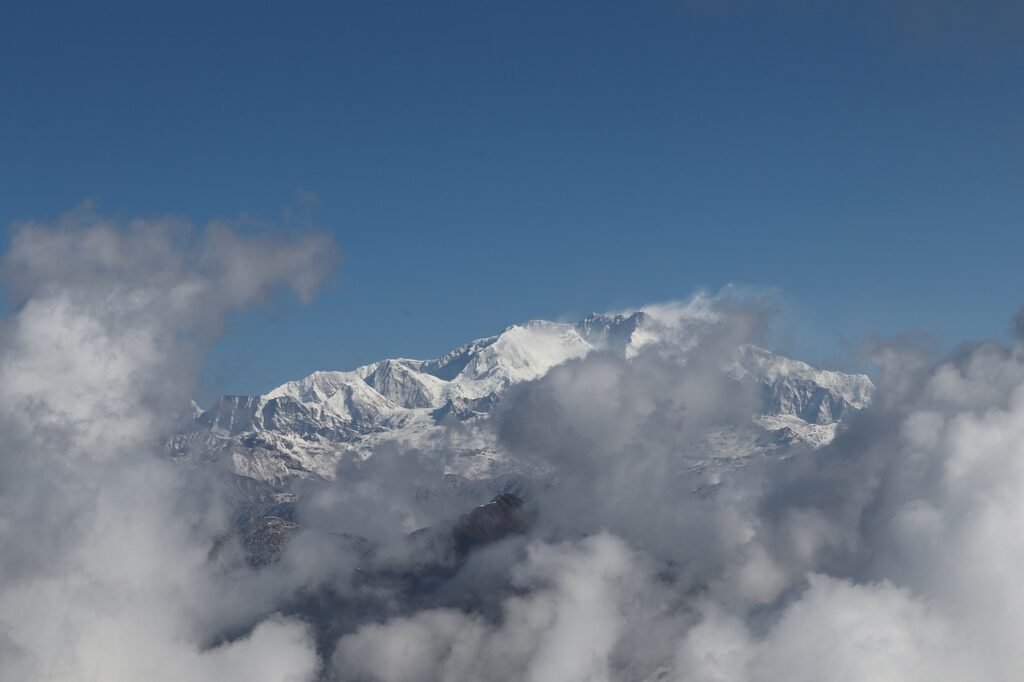
1. Clothing:
- Base layers (moisture-wicking)
- Insulating layers (fleece or down jackets)
- Waterproof and windproof jacket and pants
- Trekking pants and shorts
- Thermal underwear
- Moisture-wicking socks
- Insulated gloves or mittens
- Warm hat or balaclava
- Sunglasses with UV protection
2. Footwear:
- Sturdy trekking boots with ankle support
- Gaiters (for keeping snow and debris out of boots)
3. Equipment:
- Backpack (50-70 liters)
- Sleeping bag (rated for sub-zero temperatures)
- Sleeping pad or mattress
- Trekking poles
- Headlamp with extra batteries
- Water bottles or hydration system
- Multi-tool or knife
- Personal first aid kit
- Sunscreen and lip balm with SPF
- Insect repellent
4. Climbing Gear:
- Mountaineering boots suitable for crampons
- Crampons
- Ice axe
- Climbing harness
- Helmet
- Rope
- Carabiners and quickdraws
- Ascender and descender devices
- Prusik cords
- Snow picket or ice screws (if needed)
5. Navigation and Communication:
- Map of the area
- Compass or GPS device
- Altitude watch or device
- Satellite phone or two-way radio (for emergencies)
6. Miscellaneous:
- Lightweight stove and fuel
- Cooking utensils and pot
- High-energy snacks and food
- Trash bags (for waste disposal)
- Camera or smartphone for capturing memories
Important Considerations:
- Check weather forecasts and trail conditions before departure.
- Acquire necessary permits and permissions for the trek or climb.
- Train physically and mentally for the challenges of high-altitude trekking and climbing.
- Respect local customs and environmental regulations.
- Consider hiring a local guide or joining a reputable trekking agency for safety and support.
Remember, the gear list may vary based on individual preferences, specific route chosen, and the season of the trek or climb. It’s crucial to assess your needs and the requirements of the journey before finalizing your gear selection.
Best Time to Visit Kanchenjunga for Trekking and Climbing
The Kanchenjunga region offers stunning trekking and climbing opportunities, but choosing the right time to visit is crucial for a safe and enjoyable experience. Here’s a breakdown of the best times to explore Kanchenjunga:
1. Spring (March to May):
- Spring is considered the best season for trekking and climbing in Kanchenjunga.
- The weather is generally stable, with clear skies and mild temperatures during the day.
- Rhododendrons and other wildflowers bloom, adding vibrant colors to the landscape.
- The trails are less crowded compared to the peak tourist season.
2. Autumn (September to November):
- Autumn is another excellent time to visit Kanchenjunga.
- The weather remains dry and stable, offering clear views of the majestic peaks.
- The temperatures are comfortable during the day, although nights can be chilly at higher elevations.
- The trekking routes are less muddy, making for easier and more enjoyable trekking conditions.
- Autumn is also the peak season for trekking in Nepal, so expect more crowds on popular trails.
3. Pre-monsoon (March to June):
- Early spring to early summer is a good time for climbing expeditions to Kanchenjunga.
- The weather is relatively stable, with fewer chances of snowfall or heavy precipitation.
- Climbing conditions are favorable, with less risk of avalanches or crevasse dangers compared to the post-monsoon season.
- Daytime temperatures are pleasant, but nights can still be cold at higher altitudes.
4. Post-monsoon (September to November):
- Post-monsoon is suitable for climbing Kanchenjunga, especially for those seeking quieter trails.
- The weather gradually clears up after the monsoon season, offering stunning views of the surrounding peaks.
- The risk of avalanches and crevasse dangers is lower compared to the pre-monsoon season.
- However, trekking trails may be wet and muddy, requiring extra caution and proper gear.
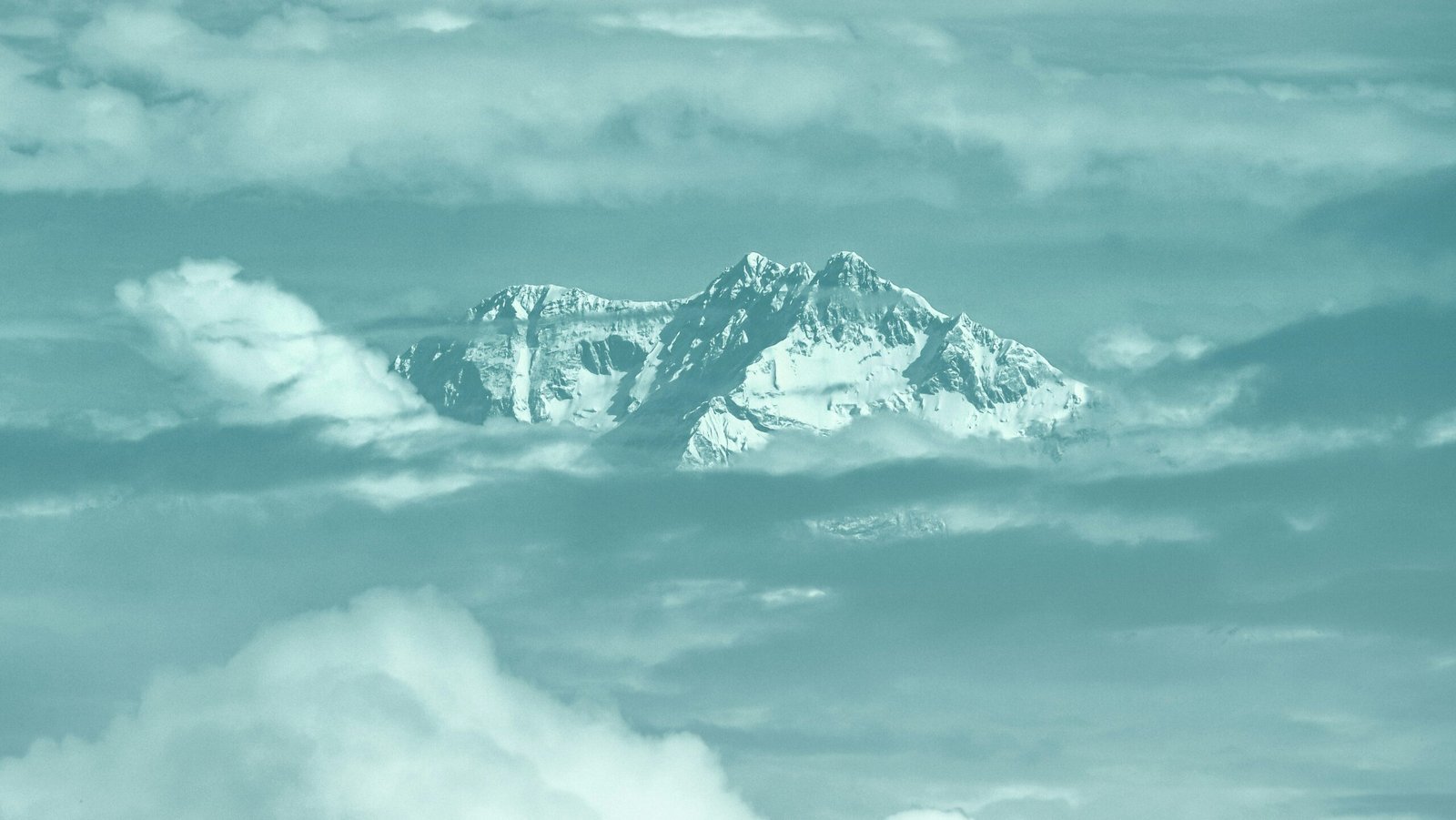
5. Winter (December to February):
- Winter is not recommended for trekking or climbing Kanchenjunga due to harsh weather conditions.
- The region experiences heavy snowfall, high winds, and extremely cold temperatures, making it dangerous for outdoor activities.
- Trails may be inaccessible, and mountain passes could be blocked by snow.
- Limited accommodation and services may be available during this time.
For the best trekking and climbing experience in Kanchenjunga, plan your visit during the spring (March to May) or autumn (September to November) seasons when the weather is most favorable, and the trails are in excellent condition. Pre-monsoon and post-monsoon seasons also offer opportunities for climbing expeditions, but conditions may vary, requiring careful consideration and preparation. Avoid visiting during the harsh winter months due to safety concerns and limited accessibility.
Accommodation Options Near Kangchenjunga: Where to Stay in the Himalayas
Finding accommodation near Kangchenjunga can be quite challenging due to the remote and rugged terrain of the region. However, there are a few options available for travelers depending on their preferences and budget.
1. Tea Houses/Guesthouses:
Along popular trekking routes such as the Kangchenjunga Base Camp trek, there are basic tea houses and guesthouses operated by local villagers. These offer simple accommodation with shared facilities such as bathrooms and dining areas. They provide a cozy and authentic experience of staying in the Himalayan region.
2. Camping:
For those seeking a more adventurous experience, camping is a popular option. Many trekking companies offer fully supported camping treks where they provide tents, meals, and other necessary equipment. Camping allows you to immerse yourself completely in the breathtaking natural surroundings of Kangchenjunga.
3. Lodges/Hotels:
In towns and villages near Kangchenjunga, there are a few lodges and hotels that offer more comfortable accommodation with amenities such as private rooms, attached bathrooms, and sometimes even Wi-Fi and hot showers. However, the availability of such facilities may be limited, and it’s advisable to book in advance during peak trekking seasons.
4. Homestays:
Some local families in the region also offer homestay accommodation, where travelers can stay with them and experience the local culture and way of life firsthand. This option provides a unique opportunity for cultural exchange and a deeper connection with the local community.
Note: Check the availability and make reservations in advance, especially during the peak trekking seasons from March to May and September to November.
Transportation Guide to Reach Kangchenjunga
To reach Kangchenjunga, one of the tallest mountains in the world, you’ll need to plan your transportation carefully. Here’s a guide:
1. Flight to Kathmandu or Bagdogra:
Depending on your starting point, you’ll likely need to fly into either Kathmandu, Nepal, or Bagdogra, India. These are the nearest major airports to the Kangchenjunga region.
2. Drive to Taplejung or Yuksom:
From Kathmandu or Bagdogra, you’ll need to arrange ground transportation to either Taplejung in Nepal or Yuksom in the Indian state of Sikkim. Both of these towns serve as starting points for treks to Kangchenjunga Base Camp.
3. Trekking:
Once you reach Taplejung or Yuksom, you’ll begin your trek towards Kangchenjunga Base Camp. The trekking route will take you through rugged terrain, dense forests, and remote villages. Be prepared for challenging conditions and altitude sickness.
4. Guides and Permits:
It’s highly recommended to hire a local guide or join a trekking group for safety and navigation purposes. Additionally, you’ll need to obtain the necessary permits from the respective authorities in Nepal or India for trekking in the Kangchenjunga Conservation Area.
5. Accommodation:
Along the trekking route, you’ll find tea houses, lodges, and camping sites where you can rest for the night. Accommodation options may vary in terms of comfort and facilities, so be prepared for basic amenities.
6. Altitude Acclimatization:
Take your time to acclimatize to the high altitude during the trek. It’s essential to listen to your body and follow the advice of your guide to prevent altitude-related illnesses.
7, Reaching Kangchenjunga Base Camp:
The trek to Kangchenjunga Base Camp typically takes around 10-14 days, depending on your starting point and pace. Once you reach the base camp, you’ll be rewarded with breathtaking views of the majestic Kangchenjunga massif.
8. Return Journey:
After experiencing the beauty of Kangchenjunga, you’ll retrace your steps back to Taplejung or Yuksom before continuing your journey back to Kathmandu or Bagdogra..
Conclusion
In conclusion, exploring Kangchenjunga, whether through trekking, climbing, or simply admiring its majestic beauty from afar, offers an unparalleled adventure in the heart of the Himalayas. From its towering peaks and pristine landscapes to its rich cultural heritage and spiritual significance, Kangchenjunga captivates the hearts and minds of adventurers and nature lovers alike. While the journey to Kangchenjunga may be challenging, the rewards are truly extraordinary, promising unforgettable experiences and lifelong memories. Whether you’re embarking on a trek to the base camp, conquering its formidable slopes, or simply marveling at its breathtaking vistas, Kangchenjunga invites you to discover the wonders of the natural world and the indomitable spirit of human exploration.
Hope you found this article helpful! If you want to discover more then check our other blogs on World’s Top 10 Mountain Peaks.

